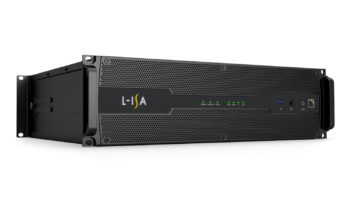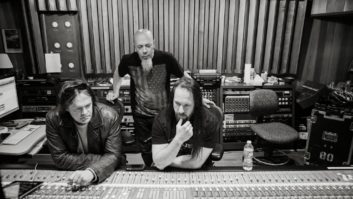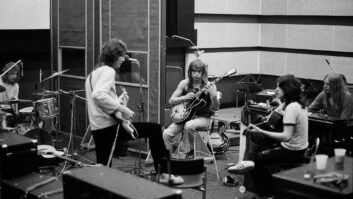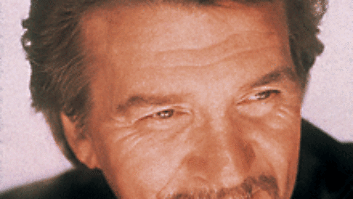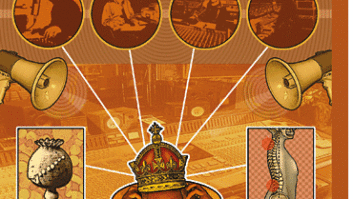Periodically, we like to check with engineers to see whether
technology or other considerations have changed the ways they record
music. During my two decades at Mix, there have been so many
technical innovations, revolutions and paradigm shifts that I’m always
surprised to hear that, by and large, most engineers stick by the
tried-and-true methods (and in some cases, equipment) that have worked
so well for so long, with an occasional new wrinkle added here and
there, of course. On the subject of piano miking, we spoke to engineers
Al Schmitt, Bill Jenkins (along with pianist Mike Garson), Tony
Faulkner, Ed Cherney and Jay Newland. Our thanks to all of them for
their insights.
AL SCHMITT
Veteran engineer Al Schmitt believes that “piano is the most
difficult instrument to record really well because it has such a wide
dynamic range — it can be extremely subtle or very, very loud,
often in the same song, so you really have to pay attention to what
you’re doing.”
Schmitt certainly knows what he’s doing when it comes to piano,
having worked with some of the best players in the business over his
storied career, including his recent Grammy™-winning recordings
with jazz-pop chanteuse Diana Krall.
“The difficult thing with recording Diana is she plays and
sings at the same time,” Schmitt says. “Probably 95 percent
of her vocals are live and 95 percent of the piano is live, so we have
a little problem trying to keep the separation going. When we work here
at Capitol, I have this foam-rubber padding that fits right behind
where the music stand folds up, and then we will drape over the piano
to get that isolation. Inside the piano I use a couple of [Neumann]
M149s. On the vocal, I use a U67. I keep the piano wide open so I can
get the mics up a little bit; they’re probably up about 18 inches.
“With someone like Joe Sample, who is playing but not singing,
I’d keep the piano open, use the M149s inside, and then outside the
piano, right at that curvature at the top, I’ll use some B&Ks most
times to get more ambience, or I’ll use a [AKG stereo] C-24. I have
some really nice preamps that I like for piano — I’ll use these
Studer valve preamps that sound terrific. I also use the Mastering Lab
[preamp] on piano. If I’m working on an old Neve board like I do a lot
at Avatar, I use the preamps in the board, which sound great on
piano.”
Has Schmitt’s piano recording technique changed through the years?
“Not really. The microphones have changed a little bit. Before
the M-149s came out, I used to use C-12s or B&Ks, and even in a
couple of cases, I’d use a couple of Schoeps. But since the 149s have
come out, I’m just crazy about those on piano.”
Schmitt notes that many other variables can affect the piano sound,
including the piano itself, the room it’s being recorded in and, of
course, the player’s style. “Usually, an artist has a piano they
like or are most comfortable with,” he says. “So if you can
get that, so much the better. I’ve heard some incredible European
Steinways. There was a German Steinway piano we used with Joe Sample on
Spellbound and a couple of those albums that I think it was the
best piano I ever recorded in the United States.” Schmitt also
raves about a $125,000 Fazioli piano at Plus 30 in Paris: “It was
sensational; it really spoke.”
Schmitt is currently working on yet another Krall album.
“She’s writing more of her own songs this time and really
stretching out.” And along with fellow engineering titans Ed
Cherney and Elliott Scheiner, Schmitt has started a small jazz label
called Bop City. Not surprisingly, there’s going to be plenty of piano
music coming out of that imprint; in fact, the maiden release is by
19-year-old piano prodigy Taylor Eigsti, recorded by Jeff Cressman and
remixed by Schmitt.
Tony Faulkner
TONY FAULKNER
Esteemed British engineer Tony Faulkner has recorded hundreds of
albums of (mostly classical) piano music through the years: solo, in
small ensembles, piano concertos with orchestra; just about every
conceivable variation. He shared some of his thoughts on different
aspects of piano recording:
“I have two favorite mics I use for piano. For most classical
recording, I’ll use the Neumann M50c, which is one of the wonderful old
tube Neumanns, as my main mics. But if I want a closer pickup for jazz
or something, I like to use ribbons. I have some old RCA-type 44s made
by AEA in California that are fantastic. The problem I have with modern
transistor mics is, particularly when you go close on a piano, they
sort of spit at you and rattle, and it’s a rather ugly sound. It’s like
seeing too much nasal hair on a photograph; it’s not what you want on a
close-up. But ribbons have such incredibly low distortion, and because
of the pattern, you can get a very present sound that you can actually
recognize as something warm and friendly, and it doesn’t squeak and
scratch and spit at you.
“I don’t really like the sound you get putting mics inside a
piano,” he continues. “A piano, particularly something like
a Steinway with the lid up, was really designed to project in a place
like Carnegie Hall. And if you have something designed to make a big
noise in a big space, going in close usually doesn’t sound quite right
to me. The problem with close-miking is where are you going to put the
[mics] without highlighting certain parts of the piano? You also tend
to get a little more of the mechanics: the action noise, the popping up
and down; not everyone wants to hear that, and it also makes the piano
a much more percussive instrument. I like my sound to have some space
from the room in it, and, of course, in classical music, we’re often
recording in concert halls or very large studios.”
So where does he put the mics? “Well, it depends. You might
want to put the mics in the arc of how the lid of the piano is
projecting the sound of the piano into the hall. You might come back
eight to 10 feet with a pair and catch the sound there. Or, if you go
down to the bottom end and look under the lid, you’ll see three lines
of the frame casting. If you align a pair of mics to look down the
middle one — one in from the one closest to the back angled about
15 degrees — place one mic to the left and one to the right and
come back three or four feet. That can make quite a nice stereo effect
and can give you a different clear and weighty perspective than putting
the mics at the front. It’s a matter of taste.
“Piano concertos are difficult because if you just put up a
couple of overall mics for everything, as you might for an orchestra,
the piano can either overwhelm the other instruments or become too much
a part of the overall sound and lack distinctness,” he says.
“You have to be careful to put the mics someplace where there’s
the right proportion of each; it’s quite difficult. Then, if you take
the lid off the piano to boost it, sometimes the room becomes too
resonant and the sound goes all over the place. How I would deal with
that is I’d use the M-50s for the orchestral pickup and probably have
something like a pair of my [Neumann] M269s for my piano, and you just
use enough of that.”
Faulkner’s preamp of choice is “Tim de Paravacini’s EAR
[Esoteric Audio Research] tube. Tim’s a brilliant man and he’s very
special, in that he’s got some experience in recording and professional
broadcasting, and the gear he makes is not only very good-sounding, but
it tends to last a long time and doesn’t fall to pieces on the road.
It’s incredibly robust and well-made. That preamp has lots of head room
and bottom end; he’s paid a lot of attention to bandwidth.”
On changes in recording piano: “When you did a record with a
pianist 30 years ago, chances are he’d done a concert of the music two
or three nights before the session, and he came in expecting to do a
complete take of the first movement of the first piece. He’d come in
and listen to it, have a cup of tea and go back and do another complete
take of it, and if there was something very specific that he didn’t
like, he might cover a page of music where there was trill in the music
he didn’t quite get right, or whatever. But that would be the basis of
the editing: a complete performance with a couple of small
substitutions. There are many artists now — the next generation
along — who may have done more recording than concerts and
they’re used to the idea of doing a complete take of the movement, but
then they’ll go back and play it maybe eight or 10 bars at a time, and
then it becomes a creative process in which the producer, the artist
and the editor make it something new rather than a slightly embellished
version of a performance. I’m more used to the first approach, mainly
because I think that’s how you make the best records of classical
music. But if you’re doing film scores or something like that, you
can’t expect these guys to learn every piece the week before, because
chances are, it’s still being written when they arrive in the
studio!”
JAY NEWLAND
Jay Newland is probably best known these days for his engineering
and production work on singer/pianist Norah Jones’ multi-Grammy-winning
Come Away With Me. But Newland already had a long, successful
studio career pre-Jones, working with a wide variety of jazz, blues and
pop artists, including Etta James, Kenny Baron, Charlie Haden, Randy
Weston, Abbey Lincoln and many others. He’s already started work on
Jones’ next album, but we started our piano recording discussion
talking about the last one. “The piano sound on Norah’s album was
mostly a pair of B&K 4007s, which to me are always very clear,
almost a little bright,” he says. “So a lot of times, what
I’ll do is, I’ll take a [Neumann] 87 and put it on a piece of foam and
just lay it in the lower midsection of the piano as a third mic to get
a sort of warm mono signal. I’ll listen to it a little bit by itself,
maybe EQ it slightly and put it on a separate track. It’s a little bit
dark and more old-fashioned-sounding. Sometimes I’ll use it, sometimes
I won’t. It works best when you have a good stereo [image], but you
sense a little emptiness in the middle and you want to fill it in
slightly with a warmer tone.
“On Norah, I couldn’t use any room mics because she’s singing
while she’s playing. We’ve got the piano covered up; in this case, at
Sorcerer Sound, we had a 1-foot-thick piece of foam rubber that was
originally part of some gobo thing, and we put it where the sheet music
goes, and then we placed piano blankets around the side. We probably
had 90-percent isolation; maybe more.
“I did a few tracks for the new album at Allaire, up in
Woodstock [N.Y.], and we used a C-24 a few inches behind the hammers,
maybe 10 inches up. I don’t like to get too close because it’s still a
jazz thing to me. If I were doing a more pop or even a hard-hitting
bluesy kind of thing, I might get a little closer with two or three
[AKG] 414s. I’ve been in many situations where an 87 is perfect. I made
a Keith Jarrett record [Bye-Bye Blackbird] where I used
Josephson mics and Demeter tube preamps. With Randy Weston, who plays a
Bösendorfer and always has lots of low end in his playing, I used
a [Neumann] 47 instead of the 87 as the third mic because it really
emphasizes the low end, which is so important in his playing. You tuck
a little of that into the mix and it makes it larger than life.
“There are a few preamps I like for piano. For years, I’ve
used Millennias: the four-way high-voltage. I like GMLs, too, and if
I’m in a Neve studio, the Neves always sound good to me, as well. The
Sontec compressor is the best-sounding piano compressor I’ve heard, if
a compressor is necessary or desirable.
“I did a record with Charlie Haden called Nocturne,
which won a Grammy two years ago, and the pianist there was Gonzalo
Rubalcaba, who is just unbelievable. On this particular date, it was a
beautiful, brand-new Yamaha piano. It was little bright; they tend to
be a bit brighter than Steinways. And on that I used a Neumann 149,
which worked out great. One thing that helped me on that session down
in Miami, though, was having a technician who worked on the piano
during the entire session. He’d be in there checking things on
every playback. And he voiced the piano in a much mellower way. The
hammers can be softened or hardened a little bit and that can affect
the tone and attack. It was outstanding. The harmonic richness of
Gonzalo’s playing really came out on that recording. There are a lot of
sessions where they’ll have a tuner on standby and that makes a big
difference. When a piano starts to go out of tune, especially in the
upper midrange before it’s actually out of tune, it gets a little
plinky. So if you can keep it in perfect tune, the recording will be
that much better.
“In the end, though, a lot of what you hear has to do more
with the musicians than the equipment you use; that’s always the case.
I did a record with [producer] John Snyder about 10 years ago and there
were four piano players on it: Kenny Barron, Barry Harris, Tommy
Flannagan and Hank Jones. We used the same piano, same mics, SSL
preamps right to the console, and we came up with four absolutely,
totally different piano sounds. It’s really an individual player
thing as much as anything. You can make your equipment choice based on
something you’ve known from the past, but then when you hear somebody
play, you might change that. You have to stay open.”
Ed Cherney
ED CHERNEY
It seems as though every time I’ve spoken with L.A.-based engineer
Ed Cherney during the past few years, he’s either in the midst of, or
just completed, some project for the Rolling Stones. This time, Cherney
was deep into mixing four different Stones DVD projects culled
from the group’s last tour; truly, there is no rest for the weary. So
it is with some measure of relief that he takes a break to talk about
recording piano, first noting, almost wistfully, “It doesn’t seem
as though I record regular acoustic pianos much anymore.” But he
has plenty of experience to draw from, having worked with such pianists
as Michael McDonald, Billy Joel, Randy Newman and Elton John.
He agrees with his buddy Schmitt that the piano is a particularly
difficult instrument to capture: “There are transients that the
meters don’t see, so you have to really use your ears, and every piano
has a different personality and every player does, too. You record it a
little differently for any kind of music you’re doing. There are just a
lot of variables.
“But I do have a place I start from. I’ve been using two
B&K 4011s in an X-Y pattern over the hammers of the C above middle
C. Then I’ll typically use an 87 — or a FET 47 if I don’t have an
87 — down at the low end on the soundboard. I’ll split the X-Y’s
left and right and I’ll blend the low mic into both sides, maybe favor
it on the left side a little bit. With the X-Y, maybe I’ll have it to
the right a little bit to bring [out] the higher strings and higher
keys.”
How far off the strings? “It depends on the music,” he
says. “Sometimes, you’re forced to get in really tight because
the piano is in the room with the rest of the instruments. Ideally, if
you have the piano open, I’d like to be between eight and 12 inches off
the hammers [for the B&Ks], and on the low end, I like to get that
in tighter; just a few inches. I want plenty of proximity effect on it
to blend it in. I don’t like to use too much EQ.” Cherney likes
API preamps on piano, adding, “I carry some Neve 1073s with me. I
like the sound of those: They’ve got a lot of headroom and a lot of
body; they saturate nicely.
“You know what, though? Depending on what you’re going for
with a piano, you might want to just take a [Shure] 57 and beat the
hell out of it with a Fairchild or some other limiter and really knock
down all of the instantaneous transients and get the harmonics to come
up. There are so many fun things you can do with it. Put pennies
between the strings. I’m always up for experimenting.”
No recording article would be complete without a touch of
controversy: “The waveform and the harmonics on the piano are so
complex that I don’t think digital recorders can really capture all of
it that well yet,” says Cherney. “They will eventually, but
it’s not quite there for me yet. A lot of times, I can hear the
holes, so any kind of action I can get in front of [the digital
recorder] is a good thing.”
THE PLAYER AND THE ENGINEER
The Disklavier Alternative
In the pop world, virtuoso keyboardist Mike Garson is well known for
his 30-plus-year association with David Bowie, as well as session work
with the likes of Nine Inch Nails, Smashing Pumpkins and No Doubt,
among others. In jazz, he’s worked with Stan Getz, Freddie Hubbard and
Stanley Clarke, to name a few, and also put out a number of discs under
his own name and with the group Free Flight. Though adept at any kind
of keyboard instrument, Garson says, “I’ve stayed true to the
piano; it will always be my favorite instrument. At the same time, I
also want to take advantage of what’s out there, so I’ve been using a
Disklavier a lot.”
In his home studio in Bell Canyon, at the west end of the San
Fernando Valley, Garson has three grands: two different models of
Yamaha Disklaviers and a MIDI grand. On the road with Bowie, he plays a
GranTouch Disklavier, “a 380-pound digital piano that has real
piano action and it sounds really good. I also use a Kurzweil on some
things and I use a Yamaha Motif [synth]. On the road, Bowie doesn’t
want to deal with tuning issues and feedback, so that’s why we don’t
use a conventional grand piano.”
Garson says that using the Disklavier system in his studio allows
him to stay fresh as a pianist, because “it’s essentially like a
computerized player piano. When I’m working with Bill Jenkins, my
engineer, I can go in and play some arpeggios — soft, medium and
loud — and he can play that back in Repeat mode and set the mics
however he wants them, depending on what we’re going to record. That
way, I don’t have to play over and over again and burn out.”
Of course, the Disklavier’s other advantage is that it can play MIDI
files. For instance, on the forthcoming Bowie album, Garson notes,
“On this song called ‘The Loneliest Guy,’ I recorded
it on synthesizer originally and then took home the MIDI file and
re-recorded it on my 9-foot Yamaha Disklavier, recording it as it
played back.” Adds engineer Jenkins, “[Producer] Tony
Visconti said he didn’t have to do much to it when he mixed it, which
is nice to hear.”
Conversely, on a track called “The Disco King,” Garson
says, “[Bowie] called me in and all he played for me was a drum
loop and his voice and he said, ‘Show me the chords and play the
piano over that,’ and I came up with this whole arrangement, but
it doesn’t have bass or guitar on it. It’s an eight-minute song and it
closes the album. But there’s an example where I took the MIDI file
home, recorded onto my piano and, ultimately, he decided he liked the
synth sound better — the Yamaha S-90 keyboard — so that’s
what’s on there.”
According to Jenkins, for the Bowie project, “What we’ve been
using mostly is a pair of Groove Tubes GT67s run into a couple of the
M-Audio TAMPA mic preamps. Then I use another pair of mics for
distant-miking — the Oktava MC012, small pencil-style mics
— into a pair of TAMPAS and then into an 02R and into Digital
Performer from there. My own preference for piano mics and preamps is
Neumann M149s to an Avalon M5; I’ve had great success with that. I’ve
also used 414s for certain piano things through the years.”
Jenkins says he “can get a pretty good piano sound in Mike’s
studio, but if I were at Schnee or O’Henry, I could get him a
great sound, so at his place, I tend to close-mike a little
more. But it also depends on the genre we’re doing. With classical
stuff, I like to back it off, obviously. With rock, you go closer in.
Using the four tracks [two close, two room mics], we’ve mostly used the
close-miking [in the mix] with just a little bit of the overheads to
give it a little more depth.” And though he, too, admires the
sound and versatility of the Disklavier system, Jenkins notes that
“It doesn’t re-create some of the real finesse stuff in the
playing. There’s some difference when you play it back, which is
unfortunate, because Mike plays so great. I’d like to hear it come back
exactly as he played it. But it’s very, very close.”—
